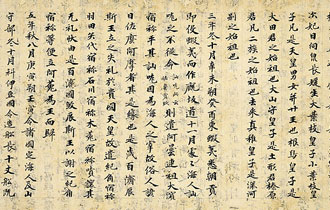Pages |
Aligning with the U.S. yields those benefits only if the U.S. neither abandons Japan nor entangles it in conflicts Japan could otherwise avoid. Accordingly, the relationship brings with it great sensitivity to shifting emphases in U.S. international policy, and the need for continuous efforts to manage relations with the U.S. Japanese management methods have ranged from (a) promises to do more in terms of military contributions beyond homeland defense; (b) toleration of U.S. violation of and exceptions from Tokyo's self-restraint principles (e.g., the presence of American nuclear weapons; export to the U.S. of weapons-related technologies); (c) extensions or retractions of promises in the face of predictable domestic or Asian protests against concessions to U.S. demands, both military and economic. Others involve Japanese acquisition of military capabilities and industrial and technological capacity at the cutting edge of military modernization which make Japan unilateral action a credible possibility. Those steps lessen the chances that the U.S. will view any other Asian state as a more promising primary regional security partner.
The second and equally important pillar is Japanese links with Asia. Economic instruments (foreign aid, direct investment, trade, technology transfer) have been especially prominent in creating a Japan partnership with most Asian states. To a large extent, those ties have involved moving Asia in directions the U.S. and Europe also appreciated (economic growth, international economic openness, military restraint, political stability and democratization). In turn, those consequences work to improve U.S. and European treatment of Japan. There are more incentives to secure Japanese cooperation and fewer to pressure Japan to adopt military policies that would antagonize Asian nations. Those payoffs would grow as Japan's deep and broad engagement with Asian states involved forming clubs of Asians more likely to bargain as a bloc with the U.S. and the European Union (e.g., the Asia-10 economic group). Such clubs preferably would include the U.S. (e.g., the Asia Pacific Economic Community, or APEC). Asia-only clubs and ones including the U.S. have value as they lessen the chances that an Asian collective will form against Japan, or that Japan will have to bargain on its own with the U.S. (or the E.U.), or that the U.S. (or the E.U.) will be able to play Japan and other Asians against each other, or that the U.S. (or the E.U.) will conclude that it can ignore a fragmented and unorganized Asia.
Yet as in the case of the U.S., Asian goodwill cannot be assumed but must be supplemented by the credible possibility of loss from threatening Japan. Those possibilities might be economic-the diversion of Japanese economic inputs and purchases to other developing regions, for example. They might be military-turning military power potential into actuality. Relevant signals include Japan's vigorous pursuit of dual-use (civil and military) technologies such as space-based intelligence systems and advanced missile and aircraft production capacity, and maintaining the ability to quickly produce nuclear weapons.
As the Cold War waned and the European Union developed, Japan has worked to add a third pillar of direct ties with Western Europe. Special attention has gone to the United Kingdom and Germany. Beyond the resulting access to commercial opportunities, these ties would help to have a joint front with the EU in bargaining with the U.S. while avoiding a joint front of the other two against Japan. The former recently has become more prominent as a way of persuading the U.S. away from extreme unilateral policies of military assertion, economic imposition, or environmental neglect.
Pages |











